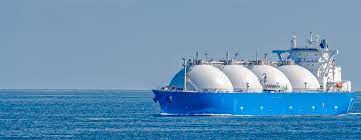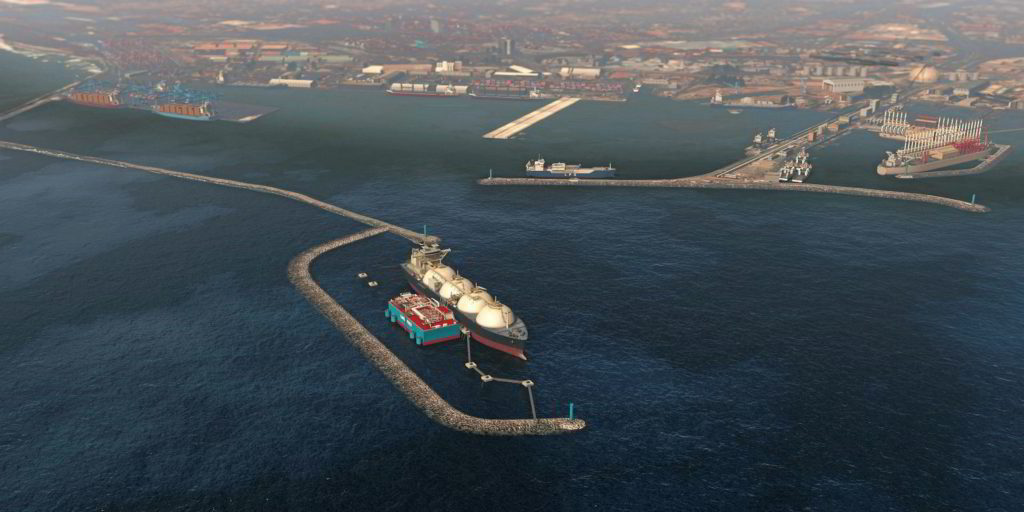Ghana’s plan to re-sell Liquefied Natural Gas (LNG) across the sub-Sahara African region, though ambitious, faces some downside risks, with Fitch remaining bearish on its feasibility.
Having heavily delayed the commercial operations of the Tema LNG import terminal, the project is now expected to start-up in Q2 2022, making the country a net importer of LNG. Earlier reports this year indicate that shipments of LNG are expected to flow to 2.0mtpa terminal by June 2022, albeit there are doubts this new date will indeed kick-start the processes.
“Risks of further delay are notable, given the amount of false hope given to the project’s start-up date in recent years– the operator of the terminal, the Tema LNG Terminal Company (TLTC) indicated in January 2021 that the facility would be online by end-Q1 2021, a timeline we were skeptical of, given Ghana’s previous history of undermined LNG projects and operational hurdles”.
Fitch
Given these risks, Fitch forecasts Ghana’s net imports of LNG to reach 0.3billion cubic metres (bcm) and 1.0 bcm in 2022 and 2023 as the facility comes online, jumping to around 1.9 bcm by the end of our 10-year forecast period to 2031.

With plans to catapult Ghana into an energy hub for the region, GNPC will buy LNG from the Tema facility and then transport it throughout SSA via pipelines, barges and trucks, Fitch said.
Though the risks pale in the long run, as forecasts demonstrate rising demand for gas across SSA over the long term, Fitch’s analysis show a widespread lack of gas import, transport and storage infrastructure across the region. On a regional basis, Fitch indicated that Ghana and Cote D’Ivoire are the only two countries expected to be net importers of LNG during a 10-year forecast period to 2031.
Regional markets lack LNG Infrastructure
According to Fitch, other markets across SSA either meet gas demand through their own domestic supply, or simply lack the necessary infrastructure for importing gas. This means SSA’s gas demand will remain constrained until this dynamic can be shifted through new investment across the region.
Additionally, Ghana’s re-export project will require a substantial amount of new infrastructure to be constructed across the SSA region, which is both costly and requires a substantial amount of time to build.
While recent reports cite Benin as a market, having already shown interest in buying LNG from Ghana, in order to increase its gas supply, Fitch indicated that “Benin has been struggling for several years to get proposed plans to build an LNG import terminal off the ground, thus currently lacks the infrastructure to import any LNG”.

Accordingly, TotalEnergies signed an agreement in 2019 to develop a floating, storage and regasification unit (FSRU) in Benin. The agreement covered imports from 2021, at 0.5 mtpa for 15 years, to supply a new 127MW power station.
However as of January 2022, there are yet to be signs of the government showing full commitment to the project, which casts major doubts on its progression and consequently, on the viability of Ghana re-exporting its LNG to Benin anytime soon, Fitch said.
“We expect that any potential re-export volumes will remain small, on both a regional and global scale, due to Ghana’s own need for domestic LNG as well as the constrained demand for gas in the SSA region”.
Fitch
One option for re-exporting LNG is through the delivery of LNG via trucks. Land-locked Burkina Faso has been targeted as a potential market that could see the delivery of LNG from Ghana via trucks coming inland.
Demand for LNG imports to Remain low in Near-term
Recently, Ecowgas, an affiliate of the Tema LNG facility was awarded contracts to build LNG storage and regasification facilities in Burkina Faso. The company already holds exclusive rights to build and operate storage and regasification facilities in Liberia and Sierra Leone. Also, Afreximbank’s Fund for Export Development in Africa (FEDA) invested in Ecowgas for a Liquefied Natural Gas (LNG) distribution infrastructure platform in the West Africa region.
It is the goal of these countries to expand their gas supply in order to serve the power sector, which are otherwise dependent on other forms of energy, such as solar or oil-fired power. However, given the low (to non-existent) gas economies present in these markets, any demand for Ghana’s LNG over the near-to-medium term will likely be of very small volumes, Fitch highlighted.
Furthermore, Ghana still requires gas for its own domestic use, which will limit the amount of LNG available for re-export across the region. Fitch forecasts a robust uptick in Ghana’s natural gas consumption over the 10-year forecast period to 2031, averaging 5.9 per cent year-on-year to reach 5.88bcm from an estimated 3.3bcm in 2021.
This will be driven by strong demand from the power sector, which accounts for the vast majority of the country’s gas consumption. Though Ghana has a history with gas purchase from Nigeria via the West African Gas Pipeline (WAGP), this has over the years suffered volatilities and the availability of gas has been falling over the years.
Though pipeline imports have a cost advantage over its LNG counterparts, the Tema LNG facility can provide Ghana with a reliable supply of gas, Fitch said.
Meanwhile, constrained supply from Shell’s global LNG portfolio means that the risk of supply disruption to the terminal is very low, which marks a significant advantage for Ghana’s future energy security.
READ ALSO: Debt Affordability Worsens, Gov’t Debt Ended 2021 at 80% of GDP- Moody’s




















